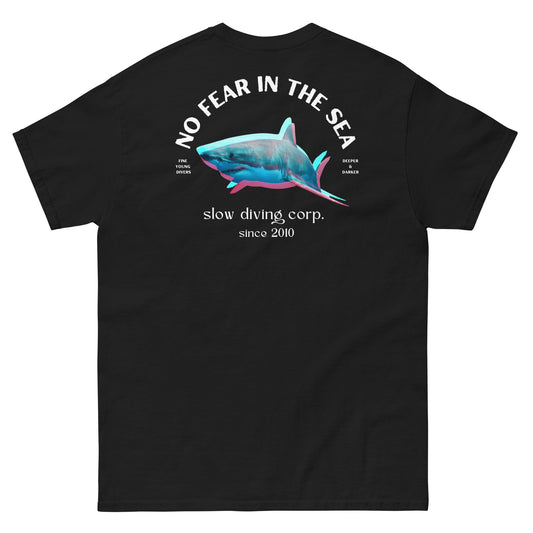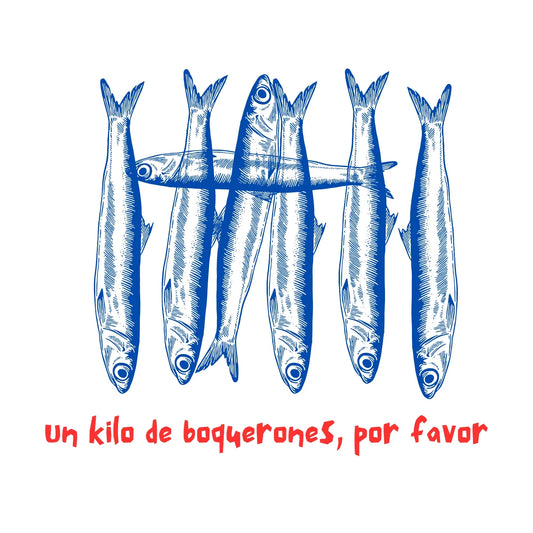The octopus is a cephalopod mollusk of the order Octopoda, referring to its eight arms. There are about 300 known species of octopus, and they are all characterized by having eight arms, which are usually filled with suckers. Unlike most cephalopods, octopuses have neither an outer protective shell, like the nautilus, nor any trace of an inner shell or bones, like the cuttlefish or squid. The only hard part of octopuses is found in their mouth, in their beak, similar to that of parrots. This beak is made of chitin and through it they inject a poison that paralyzes their prey. It is a little known fact that all octopuses are poisonous, although only one is deadly to humans, the blue-ringed octopus.
By the way, did you know that we have a collection of octopus t-shirts and sweatshirts? Top quality and ideal as a gift for cephalopod lovers.
Octopuses have a relatively short lifespan, with some species living as little as six months. Larger species, such as the giant Pacific octopus, can live up to five years under the right circumstances. Interestingly, reproduction is one of the causes of death: males can survive for several months after mating, and females die soon after the eggs hatch. They stop eating for about a month while tending their unhatched eggs and eventually die of starvation.
Another curious feature of octopuses is that they have three hearts. Two gill hearts that pump blood through each of the two gills, and a third that pumps systemic blood throughout the body. Octopuses have blue blood because instead of hemoglobin, which gives our blood its red color, they have hemocyanin to transport oxygen. This molecule contains copper, which gives their blood its blue color. This protein allows them to transport oxygen more efficiently under conditions of low temperature and low oxygen pressure.
The absence of an internal or external skeleton (although some species have a vestigial remnant of a shell inside their mantle) allows them to pass through very small and narrow spaces, as demonstrated by this octopus that we do not hesitate to call Houdini for its enormous ability to escape.
The intelligence of octopuses
Octopuses are very intelligent animals, perhaps more so than any other invertebrate. Various mazes and problem-solving experiments have shown evidence of both short-term and long-term memory. Octopuses can even be trained to discriminate between different shapes and patterns, can learn by observation, and have even been observed to exhibit behaviors that some have described as playful: repeatedly uncorking bottles or ejecting toys in a circular stream in their aquariums and chasing after them to catch them.
Other attitudes that demonstrate their intelligence are the use of tools, such as the Indonesian striped octopus (Amphioctopus marginatus), which collects coconut shells that fall into the sea to create predator-proof shelters.
Octopus defense against predator
The main weapon to escape from predators is to try to go unnoticed. When an octopus feels threatened, it will try to avoid being seen by its predator by camouflaging itself, hiding in a hollow, or mimicking its surroundings. If this strategy does not work, the octopus will try to swim away as quickly as possible. Sometimes it expels blackish ink, creating a cloud that confuses the predator. This ink also reduces the efficiency of the olfactory organs, giving the octopus time to find shelter. When all this has failed, the octopus has a last resort to get rid of one of its limbs, which, like lizards, will keep moving to entertain the attacker.
Other species have developed a tremendous talent for avoiding being eaten, such as the mimic octopus (Thaumoctopus mimicus), which has the incredible ability to mimic up to 15 different animal species, such as the lionfish or the sea snake, poisonous creatures whose shape it imitates to confuse its attackers.
Octopuses generally live on sandy and rocky bottoms, although pelagic octopuses can also be found. They feed primarily on crabs, polychaete worms, and other mollusks such as snails and clams. Open-ocean octopuses feed mainly on shrimp, fish and other cephalopods. They usually inject their prey with a paralyzing saliva before breaking it into small pieces with their powerful beaks.
The giant Pacific octopus (Enteroctopus dofleini) is the largest species of octopus. Adults typically weigh about 15 kg and can reach an arm span of up to 4.3 m. The largest living specimen of this species ever documented was a 71 kg specimen.






















